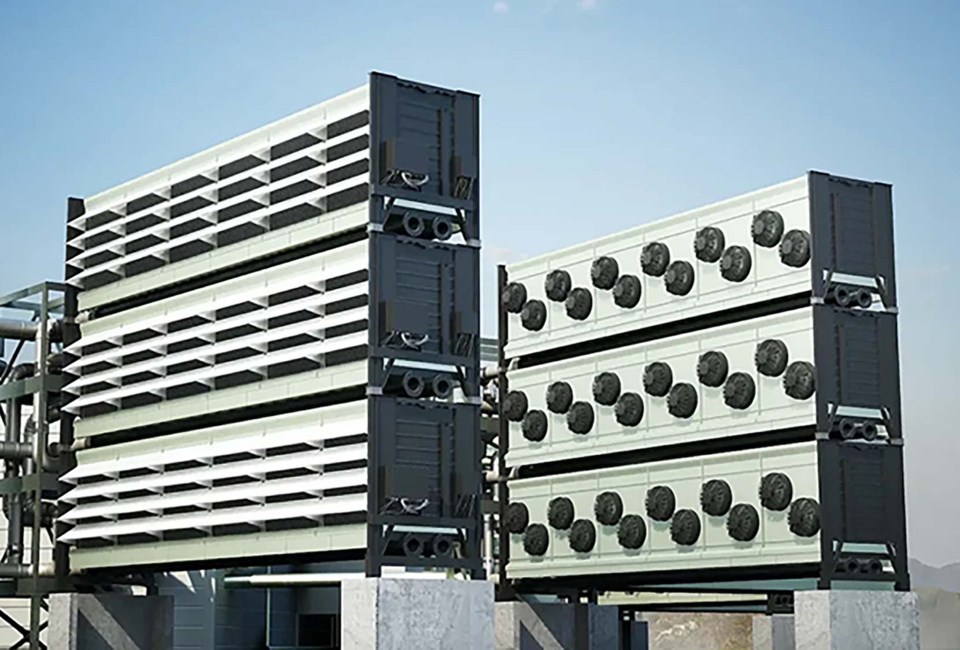New technology that can suck CO2 right out of the air should help the world fight global heating, but Alberta might not be the best place for it, experts suggest.
Several hundred guests tuned into a free online panel on direct air capture and global heating held Dec. 7 by The Transition Accelerator — a Canadian think-tank that researches ways to create a prosperous economy in a net-zero world.
Direct air capture is an emerging technology that pulls carbon dioxide from the air and stores it in some permanent fashion, explained talk moderator David Layzell, a retired University of Calgary professor who researches energy systems and greenhouse gas emissions. Unlike carbon capture and storage, which traps CO2 at the point of production, direct air capture tries to catch CO2 after it’s already spread out into the atmosphere.
The world’s atmosphere currently contains about 420 parts per million of carbon dioxide, which is not sustainable if want to avoid massive amounts of global heating, Layzell said. But even if we stop all greenhouse gas emissions today, it will take centuries for the CO2 we’ve already released to cycle out of the air.
“We really need to pull the CO2 back down again … (and) that’s going to require negative emissions technologies,” Layzell said.
Direct air capture takes many forms, including planting trees, producing biochar with carbon capture and storage, and enhanced weathering of limestone, said panellist Donald Addu of the direct air capture company Climeworks.
Climeworks has a facility in Iceland powered by carbon-free geothermal energy that uses big fans to suck air through CO2-trapping filters, Addu said. Once saturated, those filters get heated to 100 C with geothermal heat to release their CO2 into water, creating fizzy water. That water gets injected into basaltic rock where it reacts with the rock and turns to stone in about two years.
“We can essentially guarantee 10,000 years or more of CO2 removal,” Addu said — a huge step up from storage in a tree, which might last a century or so.
Part of the solution
But direct air capture is also extremely expensive, costing hundreds of dollars per tonne captured compared to less than a hundred for carbon capture and storage, Layzell said. That means it’s best used to clean up the last of your greenhouse gas emissions after you’ve reduced, prevented, and carbon-captured as much as you can.
Humanity emitted 38 gigatonnes of CO2 last year alone, Addu noted. Climeworks can currently catch 4,000 tonnes of that, and might be able to nab one gigatonne a year by 2050.
“There’s no way we could build enough capture facilities to continue the rate of emissions we have now,” he said.
“We can’t capture our way out of this problem, and we can’t solve the problem of climate change without capture.”
Addu said direct air capture is part of the “silver buckshot” of solutions needed to address global heating, alongside emissions reductions, carbon capture, and putting a price on carbon pollution.
Alberta has the underground storage and CO2 pipelines needed to get into direct air capture, which could help industries with diffuse, non-point-source emissions (such as airlines) reach net-zero, Layzell said.
“I would say there’s probably more important things for Alberta to put our money into,” Layzell said — Alberta has large, point-source emitters in the form of oil and gas plants that are well suited for carbon capture, and can use it to help those plants produce valuable, job-creating zero-emission fuels such as hydrogen.
The talk starts at 10 a.m. MST and will be archived on the Transition Accelerator YouTube page. Visit transitionaccelerator.ca/webinars/direct-air-capture for details.




